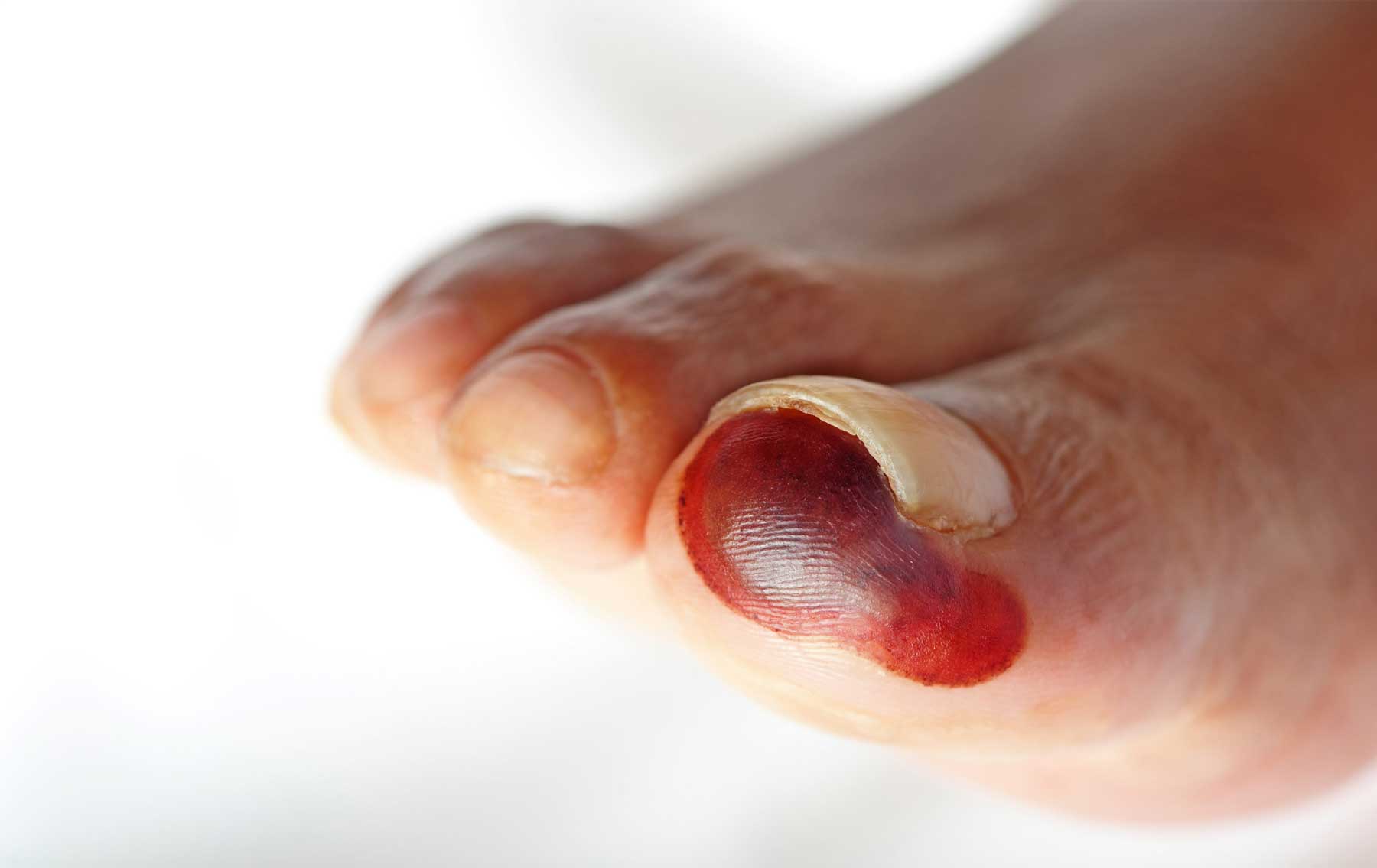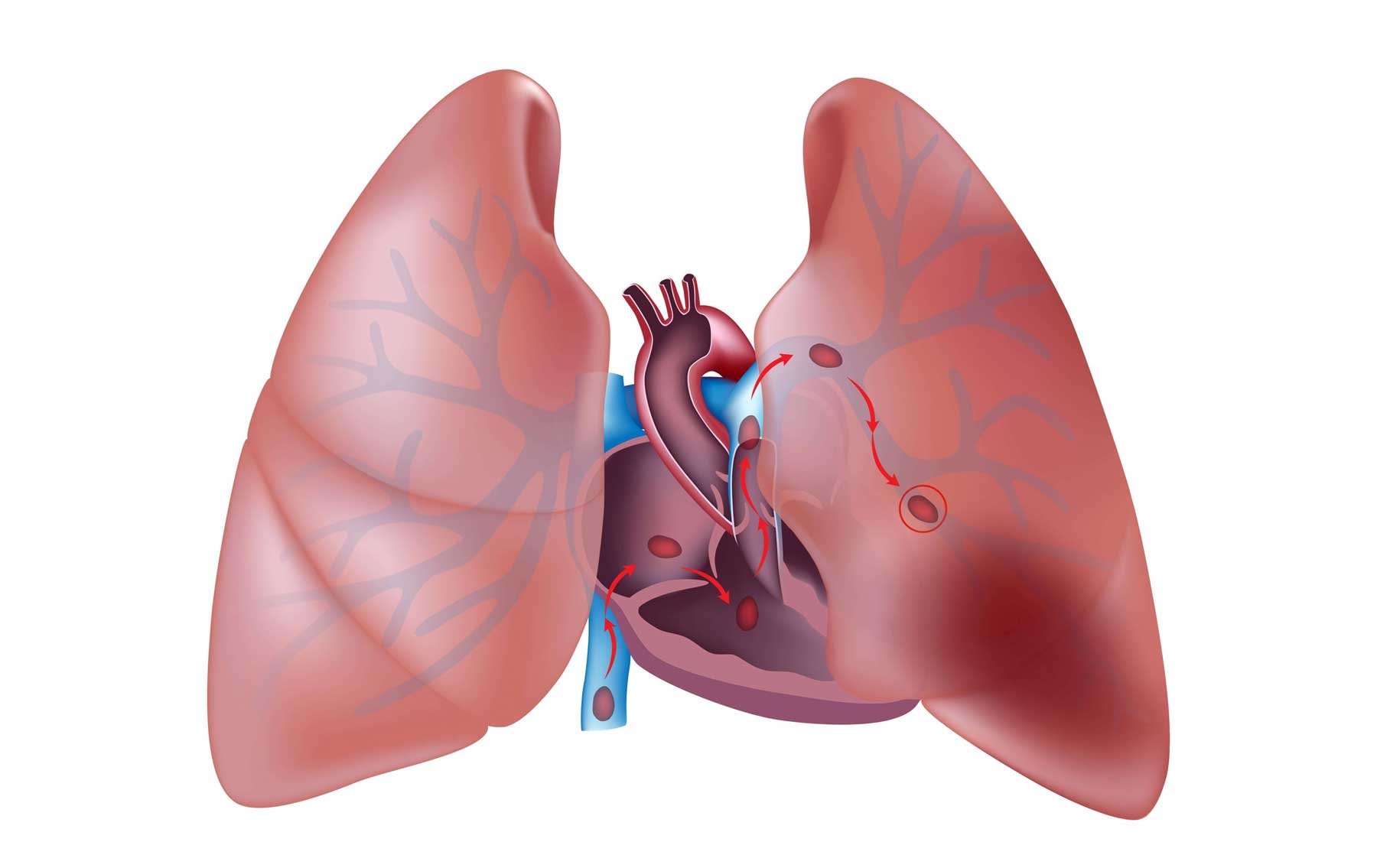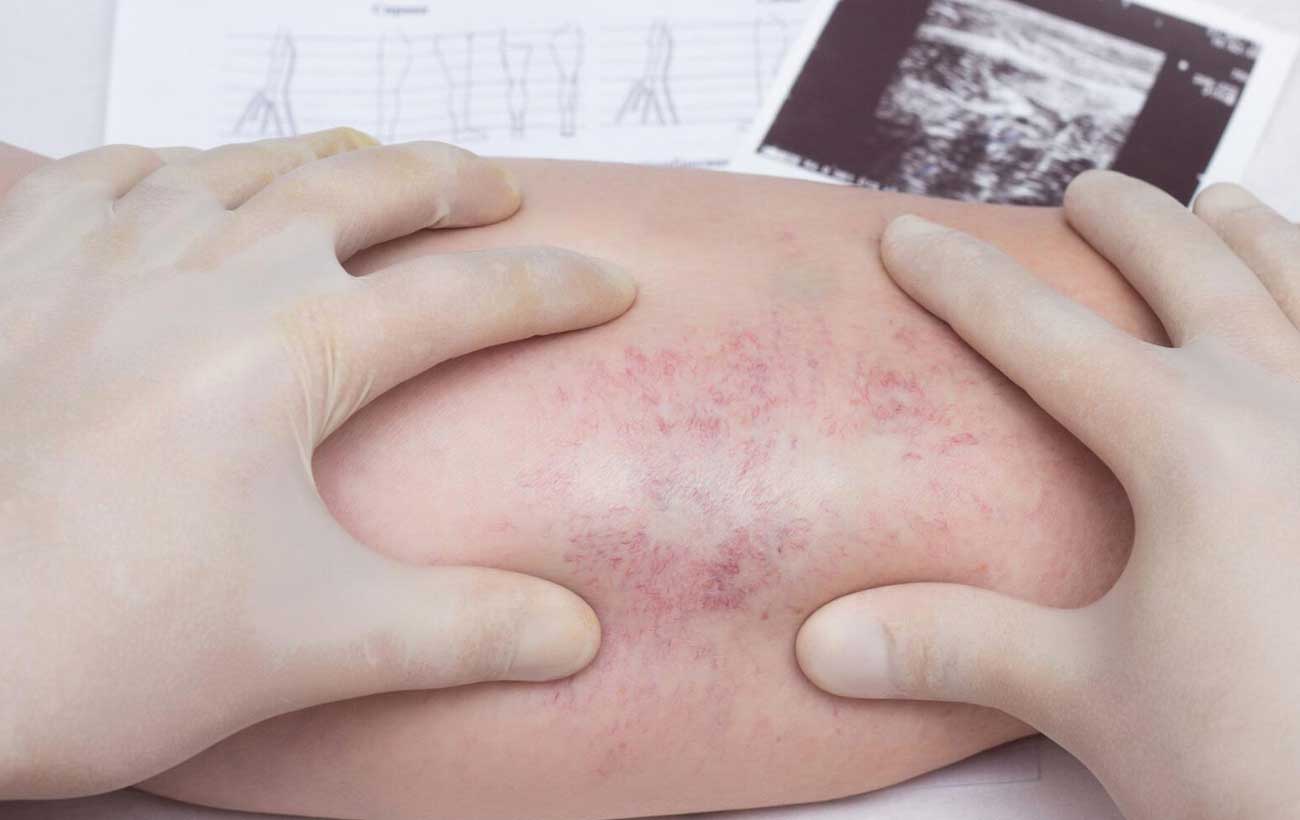Deep Vein Thrombosis Thrombosis is the formation of a blood clot (thrombus), which can partially…

Gangrene
Gangrene is tissue death. Its characteristic black color is a sign that the skin and, often, underlying muscle and bone are dead. The two basic types of gangrene are dry gangrene and infected (wet) gangrene. Dry gangrene does not involve infection; it occurs when blood flow to the tissues is blocked or reduced. This may result from an arterial embolism or from poor circulation caused by conditions that affect the blood vessels, including diabetes, atherosclerosis, or severe frostbite. The oxygen-deprived tissue dies, but the gangrene does not spread.
Infected gangrene may develop when an area of muscle and overlying skin is killed by toxins produced by bacteria called Clostridia, which multiply in dead tissue. This condition is also called gas gangrene, since the bacteria produce gas in the tissues. Infection with these bacteria may occur when a wound is contaminated. Surgeons can usually prevent infected gangrene by following careful wound hygiene precautions such as removing all of the affected tissue and all contaminated materials. Sometimes, to prevent gangrene, part of an arm or leg must be amputated. The term infected gangrene is also used when dry gangrene becomes infected with a microorganism other than Clostridia.
Symptoms
Dry gangrene may develop in the foot or leg of anyone with poor circulation. In the early stages, the limb is cold, with a dull, aching pain that increases with physical activity. If your foot is painful or unusually pale and you have poor circulation, see your doctor immediately. Pain is also the main symptom of infected gangrene. The area around the wound becomes red, swollen, extremely painful, and oozes pus. The wound may develop an unpleasant odor. The person usually experiences extreme pain while the tissue is dying, but once the tissue is dead, the pain disappears. The tissue slowly turns black, and a visible line separates the dead tissue from living tissue.
Treatments
For dry gangrene, a doctor will treat the underlying disorder that is blocking blood flow to the affected area. He or she may prescribe antibiotics to prevent infection. Doctors treat infected gangrene with antibiotics to kill the bacteria and with surgery to remove the dying and dead skin, muscle, and bone. Usually some healthy tissue next to the dead, gangrenous tissue also must be removed. To prevent the infection from spreading to healthy tissue, the doctor may recommend soaking an affected hand or foot in an antiseptic solution, removing any layer of pus that forms, and elevating the affected hand or foot as often as possible.



